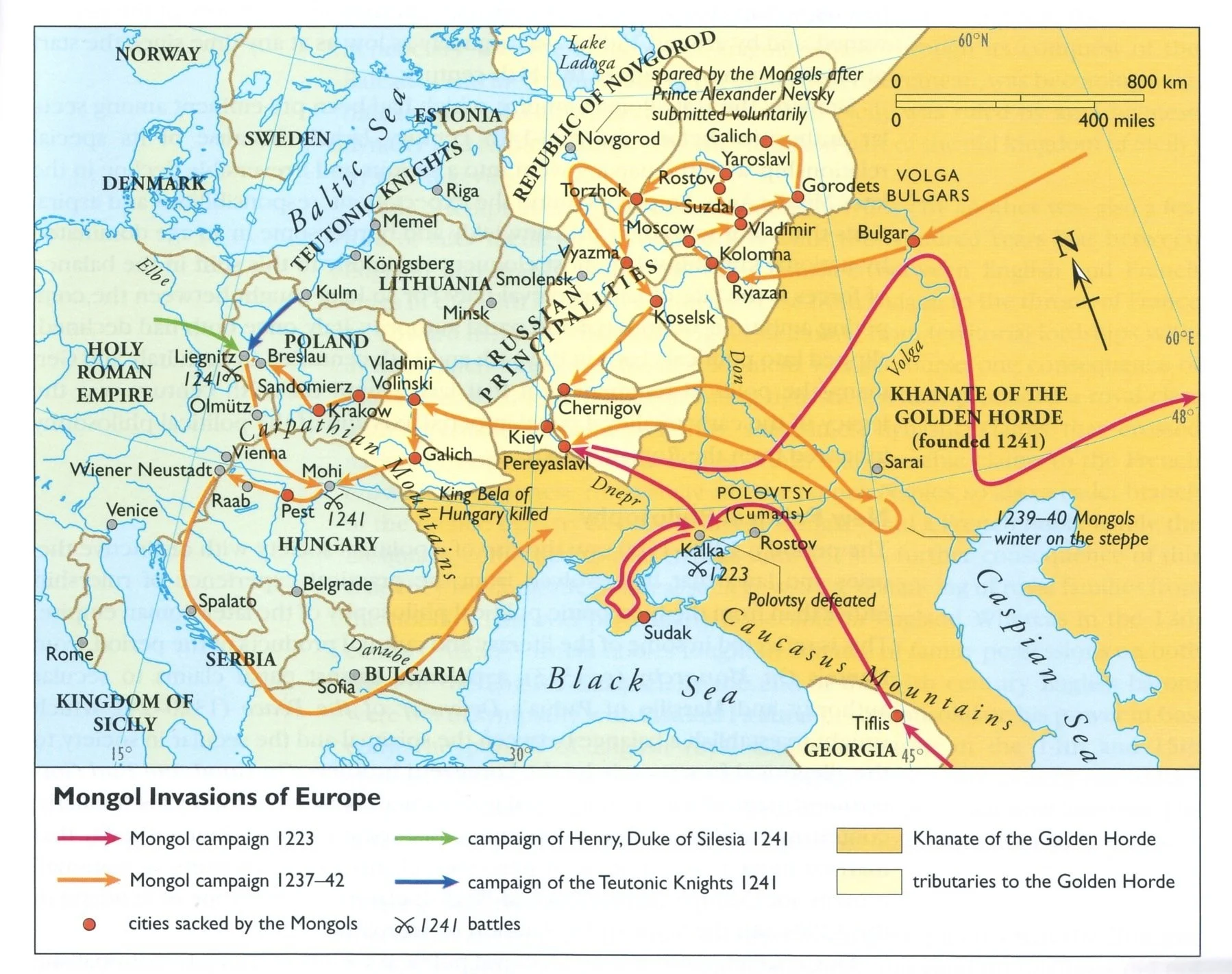Mongols from the East
It may come as great surprise that the Lithuanian’s faced not only crusading Teutonic Knights from the West but also the famous Mongolian horseback archers from the East in their plight for dominance.
In 1240, two decades after their first appearance in Europe, the Mongol’s sacked Kyiv and marched into central Europe. The primary focus of these efforts was the kingdom of Hungary, but the Mongols divided into three groups to reach their target, and wrecked havoc on Poland and Moravia in the process. These movements would have skirted Lithuania and saved it from a direct assault.
However, it is said that during King Mindaugas’ time in 1258 the Lithuanians were indeed also “devastated” in what was “possibly the most horrible event of the thirteenth century” by the Mongols. Perhaps following these events Lithuania began paying tribute to the Mongols, however this is speculation as it wouldn’t be for 100 years until a more historically significant event took place between Lithuanian and Mongol forces (1).
We used the term plight for dominance, as by the Mid-14th Century the Grand Duchy of Lithuania had grown into quite the force, one of Europe’s largest countries and expanding further under Grand Duke Algirdas (& Kestutis!) into Tatar lands. The break-up of the Golden Horde into smaller factions fighting for succession and dominance was instrumental in creating the power vacuum the Lithuanians capitalised on.
The Battle of the Blue Water in 1363 was a culmination of much of this expansion, where the Lithuanian and its Ruthenian counterparts took on the Mongols in a pitched battle. Utilising defensive posturing and modern crossbows, the Lithuanian’s took a decisive victory against the Mongols and Kyiv principality came under the Duchy.
In 1399, Kestutis’ son Vytautas took up arms once again against the Mongols in the Battle of Vorskla. This time it was in aid of Tokhtamysh, Khan of the Golden Horde who had been dethroned and who had made promises of suzerainty over Ruthenian lands to Vytautas. This would have provided the greatest expansion to the Grand Duchy yet, and Vytautas was eager to win the prize.
With a massive army consisting of Lithuanians, Ruthenians, Poles, Wallonians and Moravians they had marched across three expeditions since 1397 into Ruthenian territories. The Pope had even decreed a “Crusade against the Tatars”, ironically being led by the recently Christianised Lithuanians who had suffered so greatly at the hands of crusaders.
When the forces met at Vorskla, the Lithuanians took to building a wagon fort to provide cover to artillery to decimate the Mongols. It seemed to be working, and the Mongols eventually turned to run, but the Lithuanians were too hasty to chase down those retreating and fell right into the Mongol trap. Now surrounded, they were rained down upon by artillery and horseback archers. Vytautas himself barely made it out alive and at least 20 princes were killed in the battle.
Vytautas returned to Lithuania defeated but he wasn’t about to forget the feigned retreat of the Mongols which we will see again..
Anonymous Russian manuscript illuminators, 1560-1570s Facial Chronicle (Illustrated Chronicle of Ivan the Terrible) (in 10 volumes: pdf, pdf with translation) Public domain image - http://www.varvar.ru/arhiv/slovo/bitva_na_vorskle.html
(1) Darius, Baronas (2006). "The Encounter Between Forest Lithuanians and Steppe Tatars in The Time of Mindaugas". pp. 1–16.

